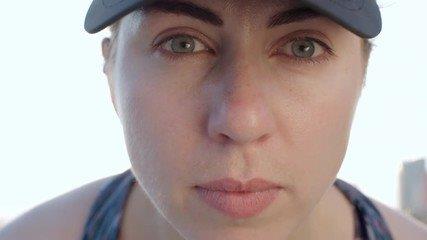
Your nose performs at least 30 functions, all of which are important supplements to the roles played by the lungs, heart, and other organs.(4) Research has shown that over 50% of children are mouth breathers (1)(2) The reason for breathing is to rid the body of excess Carbon Dioxide (CO2) that is released into the lungs from the bloodstream rather than to increase Oxygen(O2) in the bloodstream. Normal blood oxygen saturation is between 95 and 99%.
• Nasal breathing imposes approximately 50 percent more resistance to the air stream than mouth breathing, resulting in 10-20 percent more oxygen (O2) uptake.
• The air is warmed and humidified before reaching the lungs. This is particularly beneficial in cold conditions when exercise-induced asthma can be triggered.
• A significant amount of germs, pollens, and bacteria are removed from the inhaled air.
• The risk of developing forward head posture and reduced respiratory strength prevalent in mouth breathers is reduced.
• Exhaling through the nose reduces loss of moisture. This can be tested by exhaling onto a mirror via nose and then the mouth. More condensation is found on the mirror from exhaling through the mouth. This is beneficial when exercising in hot conditions (6)
• Hyperventilation occurs by rapid mouth breathing resulting in an excessive loss of Carbon Dioxide (CO2). Breathing into a paper bag restores the CO2 levels and breathing returns to normal.
• Relaxed inhalation and exhalation through the nose bring the body into a state of relaxation thereby reducing anxiety.
• Nasal breathing into the belly engaging the diaphragm stabilises the trunk and improves posture during exercise. The peripheral diaphragm is connected to the ribs and spinal column.
• Nasal breathing into the belly rather than into the upper chest during exercise prevents early fatigue of upper respiratory muscles.
• On an exhalation, the expired air warms and moistens the nasal passages preventing inflammation and blocking of the nose (7)
• Nitric Oxide (NO) pools in the paranasal sinus and nasal cavities. NO has therapeutic effects in lung and lung-related diseases such as pulmonary hypertension and adult respiratory distress syndrome.
• During inspiration, NO follows the air stream to the lower airways and the lungs. Nasal NO has been shown to increase arterial oxygen tension and reduce pulmonary vascular resistance, thereby acting as an airborne messenger. (5)
• Mouth breathing causes dryness of the mouth increasing acidification of the mouth resulting in more dental cavities and gum disease. (3)
• Mouth breathing causes bad breath due to altered bacterial flora.
• Mouth breathing is proven to significantly increase the number of occurrences of snoring and obstructive sleep apnoea.
References
- Abreu RR, Rocha RL, Lamounier JA, Guerra AF. Prevalence of mouth breathing among children. JPediatr (Rio J).2008 Sep-Oct;84(5):467-70.
- Valdenice Aparecida De Menezesa, Rossana Barbosa Lealb, , Rebecca Souza Pessoac, Ruty Mara E. Silva Pontesd. Prevalence and factors related to mouth breathing in school children at the Santo Amaro project-Recife, 2005 Brazilian Journal of Otorhinolaryngology. Volume 72, Issue 3, May–June 2006, Pages 394–398
- Harutaka Yamaguchi et al. Association between Mouth Breathing and Atopic Dermatitis in Japanese Children 2–6 years Old: A Population-Based Cross-Sectional Study.. 27, 2015.
- Timmons B.H., Ley R. Behavioral and Psychological Approaches to Breathing Disorders. 1st ed. Springer; 1994
- Lundberg JO.Nitric oxide and paranasal sinuses. Anat Rec (Hoboken). 2008 Nov;(291 (11)):1479-84
- Svensson S1, Olin AC, Hellgren J. Increased net water loss by oral compared to nasal expiration in healthy subjects. Rhinology. 2006 Mar;44(1):74-7.
- Strohl KP1, Arnold JL, Decker MJ, Hoekje PL, McFadden ER. Nasal flow-resistive responses to challenge with cold dry air. J Appl Physiol (1985). 1992 Apr;72(4):1243-6.

Its true. Breathing through nose is so important, else there are so many consequences. I didnt really know about it until I went to Breathing Center in Crestone. They are truly professional educators and taught well. I am attaching their link incase anyone is interested. .
https://www.breathingcenter.com/
Thank you Emily